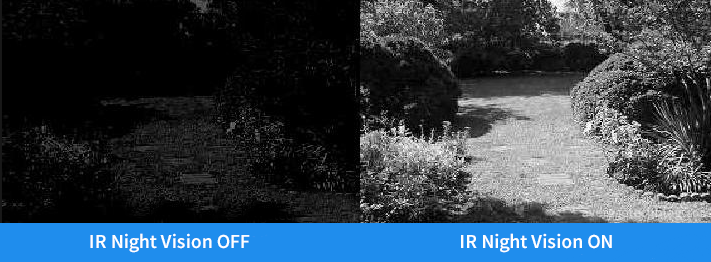What IR frequency are needed for IR Emitters
What is InfraRed, and what are IR Emitters?
InfraRed light is electromagnetic radiation (EMR) with wavelengths longer than those of visible light and shorter than radio waves. People encounter Infrared waves every day; the human eye cannot see it, but cameras can. Visible light, meaning it can be seen with the naked eye, ranges from about 390nm to 700nm. InfraRed light is any light between 8 to 15 microns (µm), or 800nm to 1500nm. IR or Infrared wavelengths are measured in ‘nm’ or nanometers, which are used to specify the wavelength of electromagnetic radiation near the visible part of the light spectrum.

How is InfraRed light used for CCTV?
There are two common IR wavelengths used in CCTV applications today: 850nm & 940nm.
The most common IR wavelength in CCTV applications is 850nm. These wavelengths allow us to see images on our cameras that would normally fall outside of our visible range. The IR LED’s are used to produce and in turn improve ‘Night Vision’ capabilities for security cameras.
Although the IR wavelengths 850nm and 940nm are fairly similar in performance, there are a few important differences worth noting. Generally, most security cameras or CCTV Cameras are sensitive to the 850nm wavelength. Although the emitted IR light is invisible to the human eye, the IR LED’s will produce a faint red glow when looking directly at the camera or source.

Benefits of 940nm InfraRed light
The main advantage of the 940nm wavelength is that the IR LED’s on the IR source do not produce any visible glow. In other words, they are completely invisible and can be used in applications that are required to be more discrete. In fact, many people refer to them as ‘Covert IR’. This type of IR is also useful in places where a red glow may be mistaken as a signal and cannot be used. The disadvantage of 940nm is that they are about 30-40% less effective and will illuminate less distance.
Standalone InfraRed Assistance
When using a separate stand-alone IR Illuminator, it is important to make sure your CCTV camera is sensitive to the same wavelength as emitted by the illuminator. In other words, if the illuminator is 850nm, your security camera must be sensitive to that wavelength. Most cameras are sensitive to 850nm. Security Cameras that are 940nm are available as well, but much less common.
Most Security Cameras with built in IR LED’s, use an IR Cut Filter in order to maximize different lighting conditions during the day or night. During the daytime, the filter is on in order filter out Infrared Light, that way, color images are not distorted by IR Light. During the nighttime, the IR cut filter is automatically switched off to allow infrared light to enter the camera. The camera switches to IR Mode (Black and White) which is more sensitive to Infrared light.
Final Notes on InfraRed
We always suggest the use of an 850nm IR emitter for our products when additional or supplemental IR illumination is needed.
IR technology has made great strides in recent years which is a great benefit to consumers and commercial CCTV users. It is now possible to see extreme distances during day and night with high powered IR LED’s and IR Illuminators. If you are planning a CCTV Installation that requires night vision, it is certainly beneficial to understand the options that are available to you.
